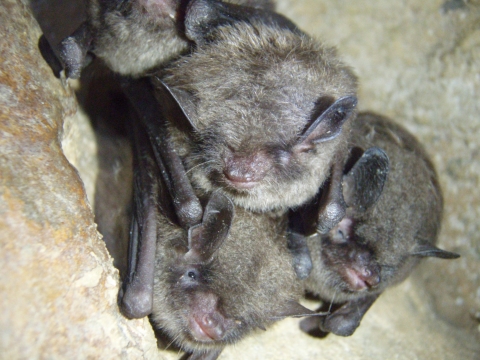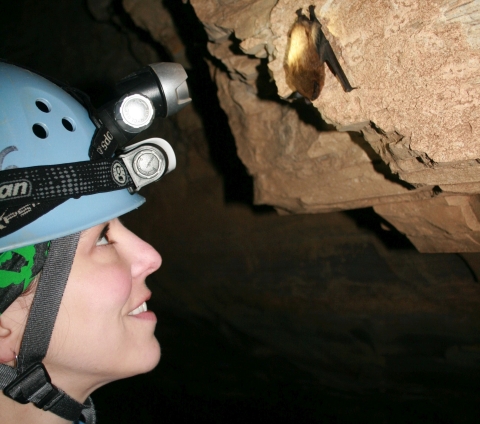Bats benefit people and our planet in many ways. Bats help farmers by consuming insect pests, which improves crop yields and reduces pesticide use. Nectar-feeding bats pollinate plants, and fruit-eating bats disperse seeds in tropical forests. Spectacular bat flights generate ecotourism dollars. Bat research leads to scientific discoveries, inspiring technology, medical breakthroughs and breathtaking art. Bats are also in trouble.
In 2020, the Service collaborated with Bat Conservation International, U.S. Geological Survey and a host of other partners to assess the risks faced by North America’s 154 bat species. The results of that assessment informed the 2023 State of the Bats Report, the first of its kind for the bats of North America.
The bat experts agree -- the next 15 years are critical for ensuring a better future. Conservation relies on identifying threats and determining the status of each bat species. Knowing the state of North America’s bats informs how we prioritize and design conservation actions. Legal protection, local action, research attention, public support and cross-boundary collaboration all contribute to safeguarding our bats. Currently, three bat species impacted by white-nose syndrome — the gray bat, Indiana bat and northern long-eared bat — are listed as endangered under the Endangered Species Act, and one — the tricolored bat — is proposed as endangered. Other endangered bat species include the Florida bonneted bat, Ozark big-eared bat, lesser long-nosed bat and Virginia big-eared bat.
Millions of bats have perished from white-nose syndrome, a deadly fungal disease of hibernating bats first discovered in New York in 2007. The fungus has spread across the United States and Canada, killing nine out of 10 little brown, northern long-eared and tricolored bats. Twelve North American bat species are known to be susceptible to white-nose syndrome when they hibernate during winter. The White-nose Syndrome Response Team, comprised of non-governmental, state, local, federal and Tribal partners, has focused research efforts to develop treatments, vaccines and prevention measures to lower the risk of extinction for susceptible native bat species.
Healthy bats need healthy and safe habitats, and different bat species choose different kinds of homes. Some species live in trees, others in caves or mines, and some in rock crevices. But across North America, bats are threatened by degradation and destruction of their roosts and foraging areas. Bats that live in caves can be especially vulnerable to disturbance from climbing and caving enthusiasts.
Bats are also impacted by the effects of climate change climate change
Climate change includes both global warming driven by human-induced emissions of greenhouse gases and the resulting large-scale shifts in weather patterns. Though there have been previous periods of climatic change, since the mid-20th century humans have had an unprecedented impact on Earth's climate system and caused change on a global scale.
Learn more about climate change — primarily extreme temperatures and prolonged drought. Intense summer heat waves and severe winter storms have taken a toll on bat populations. Renewable resources, such wind power, emit little to no greenhouse gases and help combat climate change but also can impact bats. They must be carefully managed to mitigate any possible negative effects.
But there is good news – you can help! Here’s how:
Create a bat-friendly garden by planting native species, reducing pesticide use, creating a water source, reducing outdoor lighting and trimming trees only in the fall and spring.
Provide homes for bats. Follow these directions to build a bat house in your yard.
Work with your local natural resource agency after the end of the maternity season to carefully exclude or remove any unwanted bats from your home.
Stay out of caves and mines where bats hibernate. Learn how to clean shoes and gear before and after entering caves. Don’t enter closed or gated caves.
Attend educational programs or events celebrating bats, like Bat Week every October.
Contact your states or local bat organizations to participate in bat counts or other opportunities.
Report unusual bat behavior — including bats flying during the day or bats struggling to get off the ground — to your state natural resource agency.
Use sustainable forest products; buy organic and local foods; and choose bat-friendly tequila.
Learn about bats, and share with others on social media.
Become a bat biologist and work for bat conservation. Check out our Careers page!









